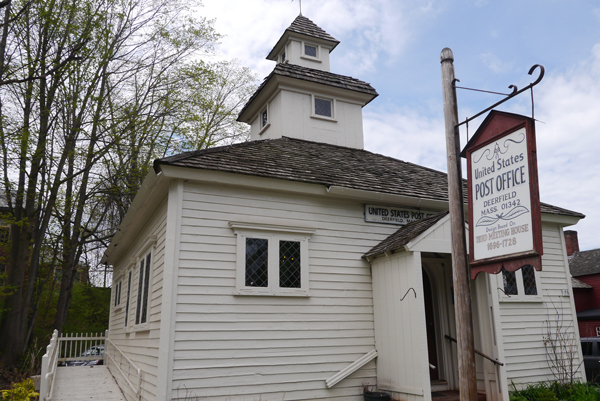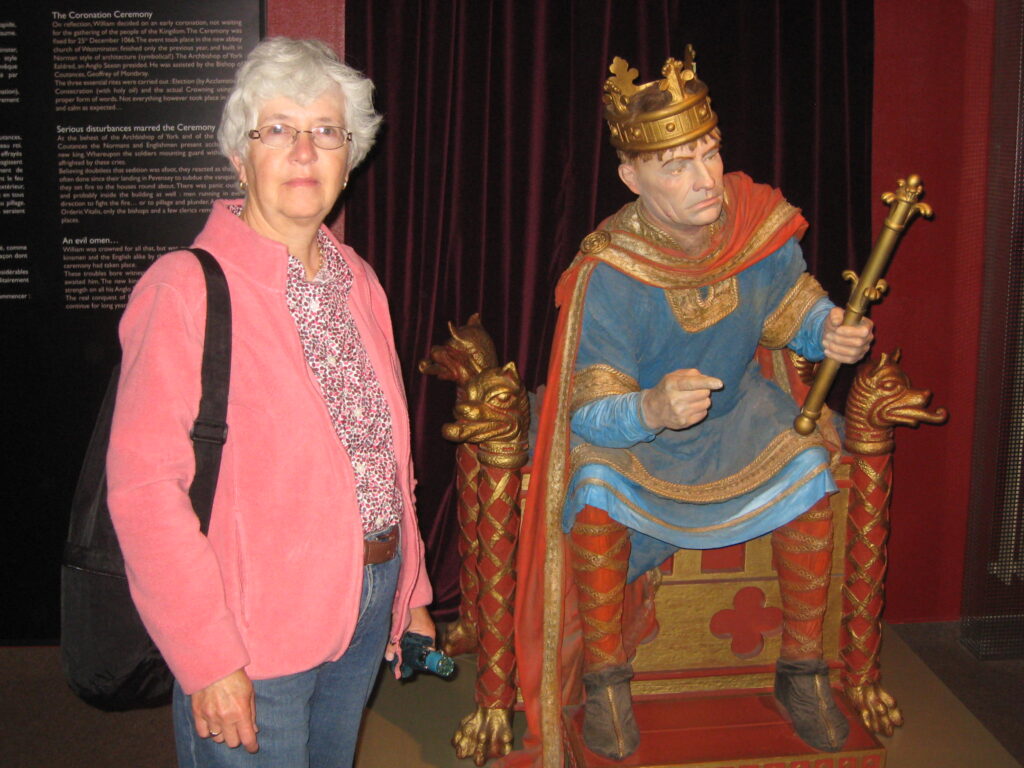This is the sixth in a series of posts about four generations of my ancestors in colonial Massachusetts and Connecticut. It includes the Bagg, Burt, Phelps, Moseley, Stanley and other related families between 1635 and 1795.
When I revised my will last year, although it expressed my wishes, its legal language felt impersonal. Reading Daniel Bagg’s will, written in 1737, was a very different experience: it gave a real glimpse of his character, revealing his love for his wife, his trust in his sons, and his generosity to his daughters.
Daniel’s will also acknowledged that God had blessed him in this life, which was a very Puritan thing to say. The Puritans of New England attributed everything that happened to them to God’s will.
Daniel Bagg (1668-1738) was a farmer in Westfield, a small town founded in 1669 on the western frontier of Massachusetts. He and the town’s other residents lived in a tightly knit community, centered around the building that doubled as the town meeting house and the Congregational church.

Agricultural fields were spread out across the surrounding areas. The hills, plains and riverside meadows of the Westfield area had fertile soil and provided growing conditions for a variety of crops, including corn, wheat and flax.
Most of Westfield’s early residents had come from either Springfield, Massachusetts or Windsor, Connecticut, and Daniel was no exception. He was born in Springfield in 1668, one of 10 children born to John Bagg and Hannah Burt.1
Daniel’s mother died when he was 12 years old, and his father died three years later. It is not clear who raised him and his eight surviving brothers and sisters after that. His father’s probate records show that Sam Marshfield was to be a guardian to sons John and James, and to Abilene, the youngest child, but there was no mention of Daniel or the other children.2 Perhaps their mother’s family cared for them.
When they became adults, John and Jonathan Bagg (James had died young), settled in West Springfield, on the west bank of the Connecticut River, where their father had owned land.
Daniel probably moved to Westfield around the time he married, in January 1693/94.3 His wife was Hannah Phelps, born in 1675 to Isaac Phelps and Ann Gaylord. Isaac Phelps had been a founding resident of Westfield and was a community leader there. Perhaps this connection to the Phelps family helped Daniel become a prominent citizen of Westfield.
In land deeds and court documents, Daniel was described as a farmer and wheelwright and, in the later part of his life, as a merchant or trader. Perhaps Daniel’s activities as a merchant brought good income, although his name appeared in several lawsuits, primarily because he either owed money or money was owed to him.4
Daniel served as a selectman (town official) of Westfield in 1718 and 1723. He represented the town in the Massachusetts legislature for a year5 and he was involved in several committees at Westfield’s Church of Christ.6
Daniel and Hannah, who were my six-times great-grandparents, had 11 children: three boys, one of whom died as an infant, and eight girls. Their youngest son, David, was my direct ancestor.
I am not sure whether the girls’ marriages are correct in the following list; Daniel did not mention any of their husbands in his will. The couple’s 10 surviving children were: Hannah, b. 1695, m. ?; Daniel Jr., b. 1697, m. Abigail Dewey; Ebenezer b/d 1700; Rachel, b. 1702, m. Aaron Phelps; Ann, b. 1704, m. John Field; Abigail, b. 1707, m. Isaac Dewey; Ruth, b. 1709, m. Daniel Dickason; Margaret, b. 1712; Sarah, b. 1714, m. ?; David, b. 1716/1717, m. Elizabeth Moseley.7 Following Elizabeth’s death in 1759, David married two more times.
Daniel prepared his will in 1737 and signed it with his mark, suggesting that, although he may have known how to read, he could not write. He died Aug. 18, 1738, age 70.8

He left to his “dearly beloved wife during her natural life” one end of “my dwelling house and part of the cellar with the one half of the garden, as also one quarter of the orchard by the house and one quarter of the land by the house that was called the homestead, being two acres and a half.”9
Daniel left all his farmland in Westfield to his two sons, Daniel Jr. and David, to share equally. Daniel Jr. was to have the new house and David the old house and barn, and Daniel was to give David 60 pounds to enable him to make improvements. David was also to have the team of oxen.
To each of his daughters, Daniel left “100 pounds with what she has already had.” He showed special concern for daughter Abigail, who was married to Isaac Dewey, and her children, leaving them extra money. He gave Daniel and David a deadline to make sure his daughters received their bequests – and extra time to come up with the funds if there was not enough in his personal estate.
See also:
Janice Hamilton, “John Bagg of Springfield, Massachusetts,” Writing Up the Ancestors, Feb. 22, 2018, https://www.writinguptheancestors.ca/2018/02/john-bagg-of-springfield-massachusetts.html
Janice Hamilton, “Isaac Phelps and His Blended Families,” Writing Up the Ancestors, May 3, 2018, https://www.writinguptheancestors.ca/2018/05/isaac-phelps-and-his-blended-families.html
Sources:
- Massachusetts: Vital Records, 1621-1850 (Online Database: AmericanAncestors.org, New England Historic Genealogical Society, 2001-2016).https://www.americanancestors.org/DB190/r/1320087835
- Hampshire County, Massachusetts probate records 1660-1916. index, 1660-1971 [microform]
- New England Marriages to 1700. (Online database. AmericanAncestors.org. New England Historic Genealogical Society, 2008.) Originally published as: New England Marriages Prior to 1700. Boston, Mass.: New England Historic Genealogical Society, 2015. https://www.americanancestors.org/DB1568/i/21174/65/426875386
- Debrett, “The Bagg Family of Massachusetts, America and of Montreal, Canada. Research for Mrs. J.D. Hamilton, July, 1980.”
- Massachusetts: Legislators of the General Court, 1691-1780 (Online database: AmericanAncestors.org, New England Historic Genealogical Society, 2002), (Orig. Pub. by Northeastern University Press , Boston, MA. John A. Schutz, Legislators of the Massachusetts General Court 1691–1780 A Biographical Dictionary, 1997.) https://www.americanancestors.org/DB142/r/5875254
- Rev. John H. Lockwood, Westfield and its Historic Influences 1669-1919: The Life of an Early Town (Springfield, 1922, Printed and sold by the author), p. 147, 310, https://archive.org/stream/westfieldandits00lockgoog#page/n174/mode/2up, accessed May 19, 2018
- Daniel’s and Hannah’s girls and boys are listed separately in the Massachusetts Vital Records 1620-1850. For example, the girls’ births in Westfield are in vol. 1, page 50; the boys are on page 3. Females births: Massachusetts: Vital Records, 1621-1850 (Online Database: AmericanAncestors.org, New England Historic Genealogical Society, 2001-2016). https://www.americanancestors.org/DB190/i/13250/50/253012007 Males births: Massachusetts: Vital Records, 1621-1850 (Online Database: AmericanAncestors.org, New England Historic Genealogical Society, 2001-2016). https://www.americanancestors.org/DB190/i/13250/3/253010247 Females marriages: Massachusetts: Vital Records, 1621-1850 (Online Database: AmericanAncestors.org, New England Historic Genealogical Society, 2001-2016). https://www.americanancestors.org/DB190/i/13251/81/253016859 Males marriages: Massachusetts: Vital Records, 1621-1850 (Online Database: AmericanAncestors.org, New England Historic Genealogical Society, 2001-2016).https://www.americanancestors.org/DB190/i/13251/4/253014174
- Massachusetts: Vital Records, 1621-1850 (Online Database: AmericanAncestors.org, New England Historic Genealogical Society, 2001-2016), https://www.americanancestors.org/DB190/i/13250/91/253013579
- Hampshire County, MA: Probate File Papers, 1660-1889. Online database. AmericanAncestors.org. New England Historic Genealogical Society, 2016, 2017. (From records supplied by the Massachusetts Supreme Judicial Court Archives and the Hampshire County Court. Digitized images provided by FamilySearch.org) https://www.americanancestors.org/DB1653/i/33925/7-17-co3/0

